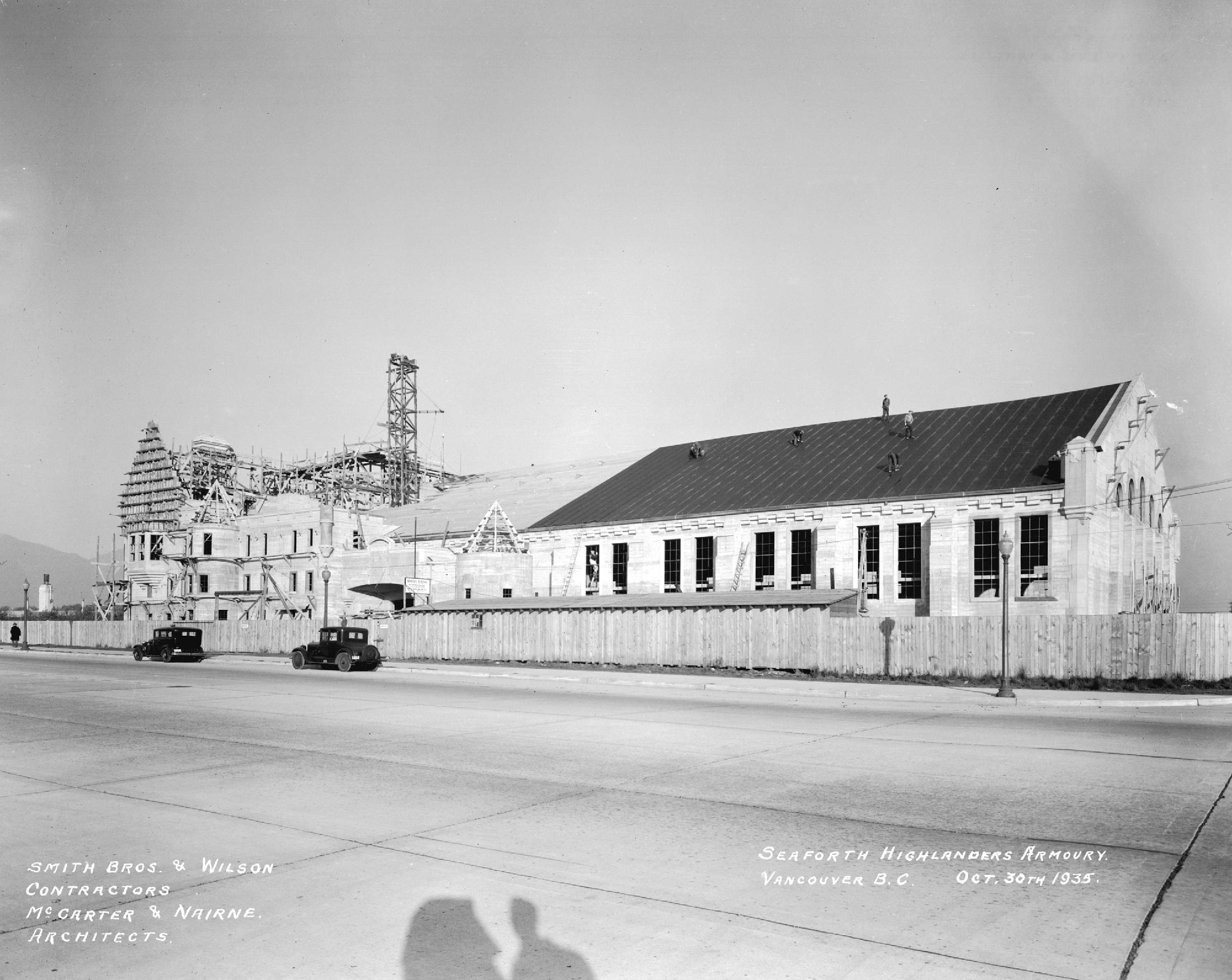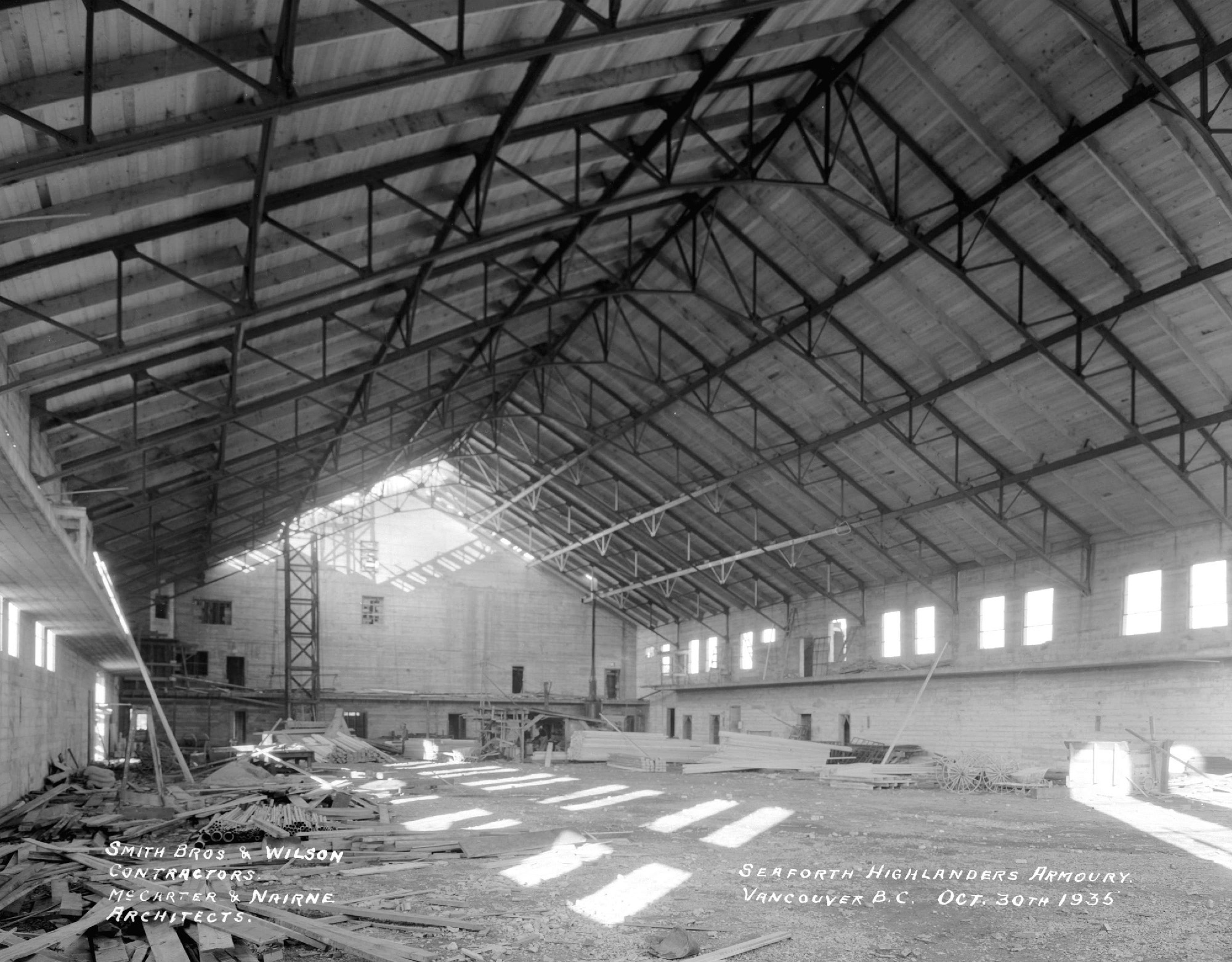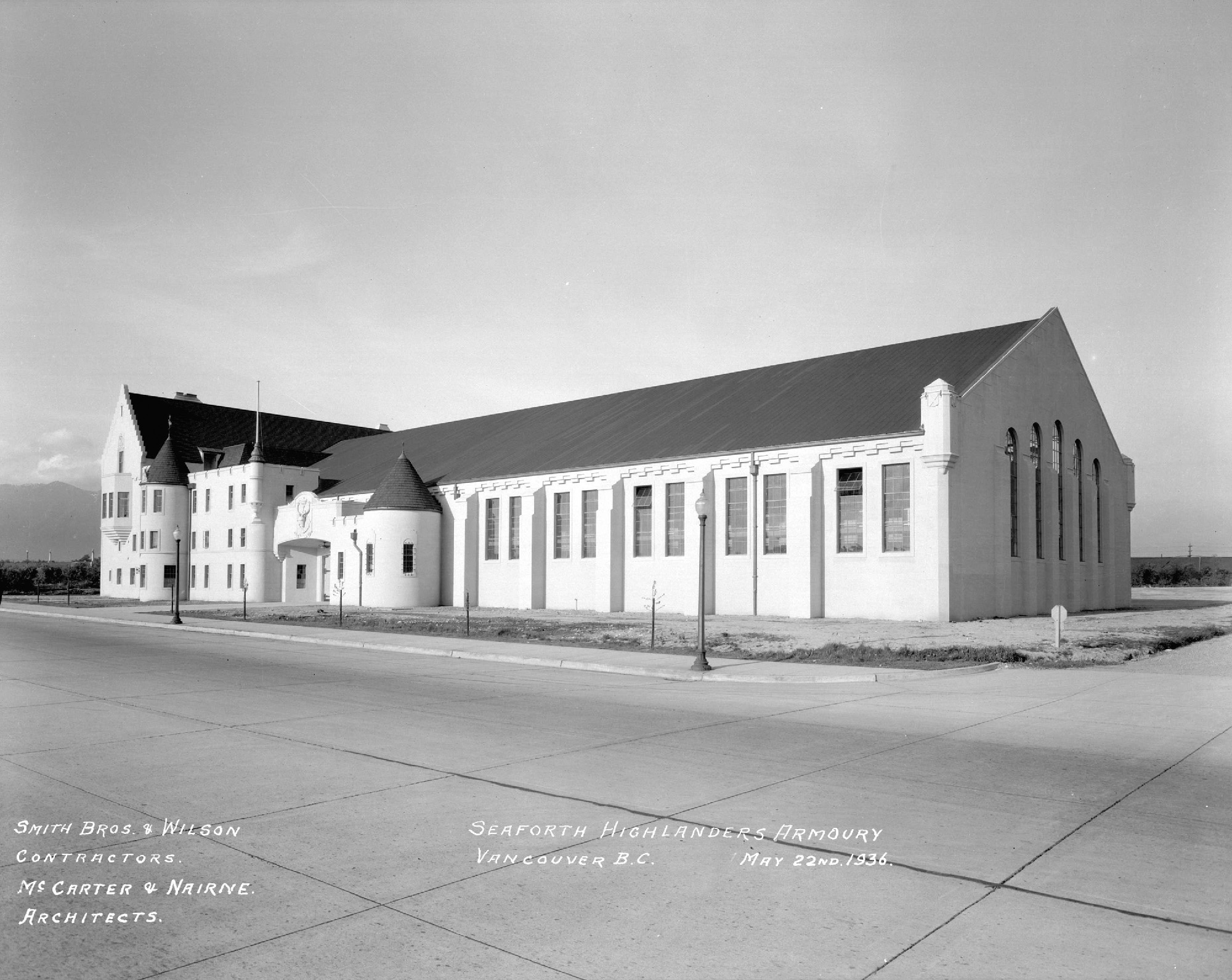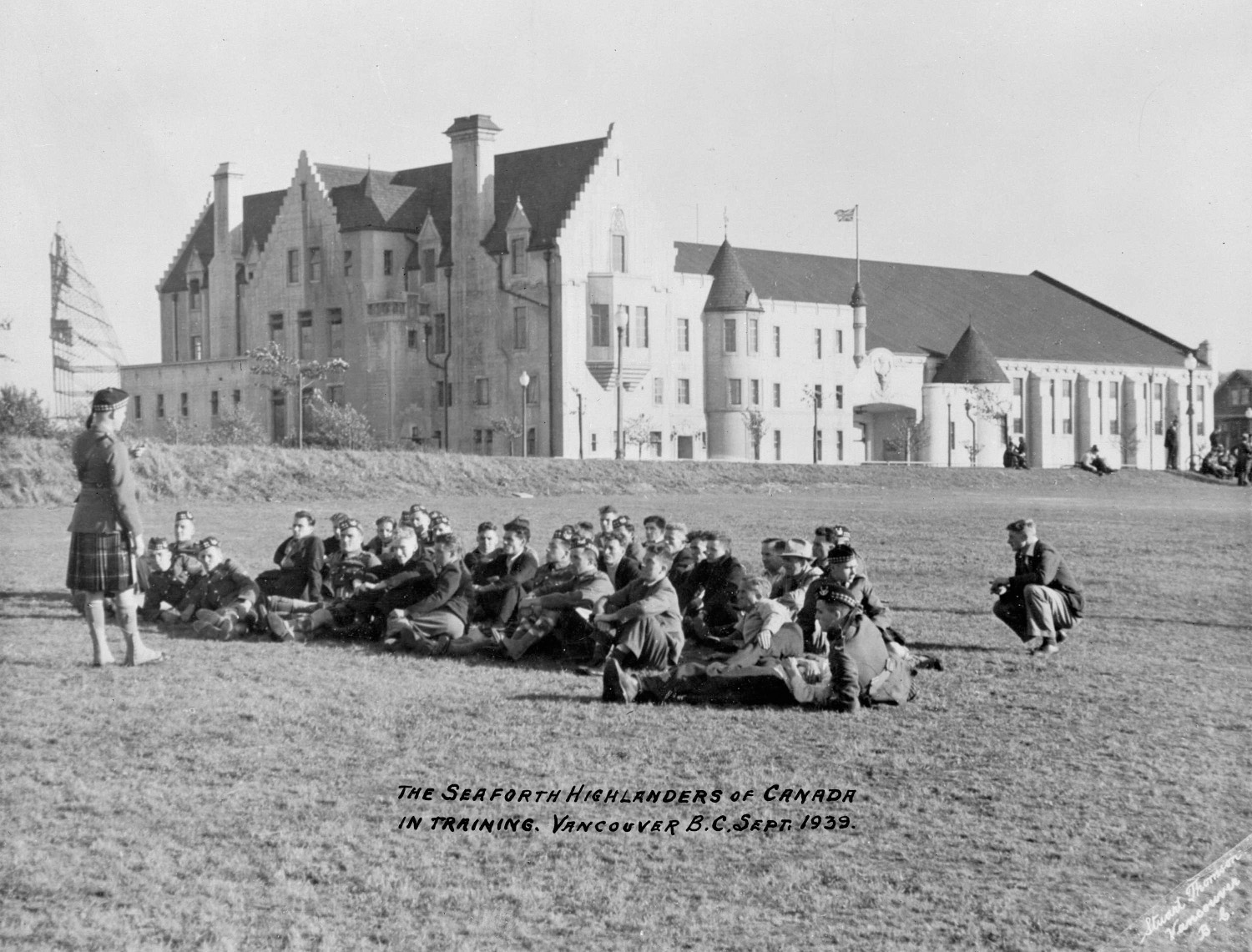“The Finest Armoury in the British Empire!”
"What Might Have Been"
If the property on Burrard St. could not be purchased from the Department of Indian Affairs the Seaforths had a back-up plan: build the armoury downtown. These plans called for the Seaforth Armoury to be built on West Georgia St. between Denman and Bidwell Streets, with the building facing Coal Harbour.
R.S.M. Walter Douglas
The construction firm tasked with building the armoury was Smith Brothers & Wilson. One of the premier firms in Western Canada, they had just completed the Bessborough Armoury on West 11th to much acclaim two years previously.
Walter Douglas, M.B.E., was the superintendent of construction. Many of the men he supervised on the construction site were themselves Seaforths, given scarce construction jobs to build their own armoury during the height of the Depression. Born in Dingwall, Scotland, in 1887, Douglas served six years with the Imperial Seaforths before emigrating to Saskatchewan. During the First World War he was the pipe-major for the Cameron Highlanders of Canada, and would later be the regimental sergeant-major of the Seaforth Highlanders of Canada 2nd Battalion from 1940 – 1947.
The program for the formal opening of the Seaforth Armoury.
After the formal opening of the Seaforth Armoury, the new Colours were consecrated, replacing those presented to the 72nd Battalion by Lieutenant-General Sir Arthur Currie on April 1st, 1919. The Commanding Officer was Lieutenant-Colonel J.R.S. Lough, D.S.O., M.C., V.D., and his second in command, seen in front of the new colours, is Major T.S. Leslie. The ceremony was presided over by Honorary Captain, the Reverend G.C.F. Pringle. Addressing the men, in front of the drums, are Honourary Colonel, Major-General J.W. Stewart, C.B., C.M.G., and Mr. J.A. Paton, president of the Seaforth Veterans.
The Trooping of the Colour past the Governor General of Canada, Lord Tweedsmuir. To the right of the royal standard is Captain C.C.I. Merritt, who would later be awarded the Victoria Cross while commanding the South Saskatchewan Regiment at Dieppe. To the left of the royal standard is Captain J.M.S. Tait, who would later serve briefly as Commanding Officer of the Seaforths in 1942.
The reviewing party led by his Excellency, The Right Honourable Lord Tweedsmuir, G.C.M.G., C.H. Governor General of Canada. The Honourary Colonel, Major-General J.W. Stewart, C.B., C.M.G., is to the left of the reviewing line. Next to him, is Admiral Sir Matthew Best, K.C.B., D.S.O. & bar, M.V.O., Royal Navy, Commander-in-Chief, America and West Indies Station. Lady Tweedsmuir stands next to the Honourary Lieutentant-Colonel, Brigadier-General J.A. Clark, C.M.G., D.S.O., V.D. Behind the reviewing line can be seen Lieutenant-Colonel A.D. Wilson, D.S.O. V.D., the Seaforth’s Commanding Officer from 1924-1928, and at the extreme right of the frame in the bowler hat is architect Jack McCarter.












